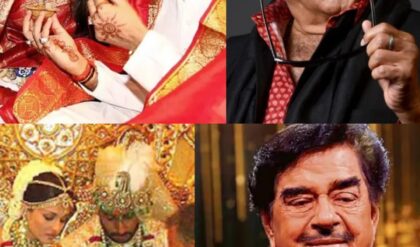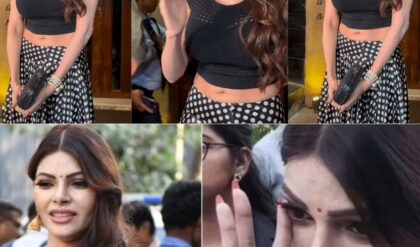Editor’s note: Ilona Maher and the U.S. women’s rugby beat Australia to win a bronze medal at Paris Olympics.
PARIS − Ilona Maher and Chase Jackson know they don’t have the body type most people think of when they hear the word “Olympian.” And they’re fine with that − because they’re determined to change the stereotype.
Maher, a social media star and member of the U.S. women’s rugby team, checks in at a muscular 5-foot-10, 200 pounds. Jackson, an American shot putter, is also a stacked 5-foot-10. That’s probably not the visual someone has of a Team USA star. The women in Olympics ads are often sleek, with long, lean legs, blond hair and an acceptable amount of muscles, no more.
In other words, they look like almost every other piece of media that women worldwide consume, especially in America: one of impossible standards.
What if there was another way though?

Over the next few weeks, Maher and Jackson will perform on a stage that lifts their niche sports to something more appreciated by the world. Their hope isn’t just to medal in their events and draw new fans but to also elevate the conversation about women’s bodies.
“I always want to get people into rugby. I think it’s the best sport in the world,” said Maher, who helped the U.S. women to a 2-0 record in rugby pool play Sunday. The Americans take on France in their final pool play game Monday, then move on to the knockout round.
“But I also just want to get girls and boys to play any sport, because I think sport has the power to change lives and to show what your body is capable of − it’s not just there to be objectified and looked at.”
‘Not only one way to look like an athlete, not only one way to be beautiful’
For Jackson, a former high school sprinter who won the 2012 New Mexico state title in 100 meters, it took time to understand that “strong is beautiful.”
“When I was younger, you know, hovering over all the boys in my grade, like I was not the delicate dancer,” Jackson said. “It was hard. When people say something like ‘You look strong as an ox!’ It’s like: ‘I’m 12. can you not say that?’”
Her journey to body acceptance didn’t happen overnight.
“It took a lot of time to be confident going out there (to the shot put ring) and wearing what I want,” Jackson said. “We grow up and we’re shown this one body, and if that’s not yours, you’re going to feel upset. I think it became important to me to talk about because I want people to know there’s not only one way to look like an athlete. There’s not only one way to be beautiful. That’s a really important message.”
Both have made an effort to share that message with social media followers. Maher is particularly active online, having amassed more than 2.7 million followers on TikTok and Instagram combined. Her social media took off in Tokyo, when sequestered athletes had to think outside the box to communicate with fans as COVID-19 forced the exclusion of spectators.

Her profile has exploded and crossed into mainstream culture − she jokingly dubbed herself “America’s Sweetheart,” though it might not actually be far from the truth − in part because of how much her theme of body positivity infiltrates every post. Her words have resonated with young women in particular. That’s intentional.
“I’ll say one positive message and then next one down as they’re scrolling (social media) is something that brings them back to the old ways of what beauty was,” Maher said. “So for me it’s important to keep saying what I believe and having these young girls see it.”
Naya Tapper, one Maher’s rugby teammates, echoed Maher’s plea for more women and body types in all sports, emphasizing the need for diversity. She said for her, tennis star Serena Williams always left an impression.
“She was the first person to put in my head that muscles are a beautiful thing for women,” Tapper said.
‘I’m girly, and I like being girly’
But it’s not just about what these athletes are saying. It’s what they’re showing off, too.
On TikTok last week, Maher modeled Olympic bikinis. She posted specifically about how “all body types can be Olympians” and has shown the body diversity throughout the Olympic Village in many of her videos.
Meanwhile, Jackson, who will throw in shot put qualifying on Aug. 8, loves for people to know that “I’m girly, and I like being girly.” She demonstrates this every time she competes, wearing a noticeable amount of makeup and getting especially artistic when it comes to eye makeup. (Like so many women across the world, she has learned tricks of the trade via YouTube tutorials.)
Jackson travels with so many products they require their own separate suitcase. She keeps her eye out for brands endorsed by drag queens because that makeup knows how to stay put when the wearer is performing in hot, sweaty environments.
“I like makeup, and in 2022 it developed into something like, ‘Why not show that?’” she said. “It became really important to me to advocate for creativity and showing girls you don’t have to just be rough and tumble to make people respect you as an athlete. You can be feminine if you want.”
She said that for years, throwers in particular have been covered in a veil of masculinity. She wants people, especially girls who might be interested in the sport, to know that’s not the only option.
She hears from those girls sometimes. They send her messages on Twitter and Instagram, showing her the new products they bought or the specific makeup technique they learned from her. One of those comments, she said, can erase hundreds of negative comments.
Her biggest takeaway from those messages: The other girls hear her. They want her, and Maher, and anyone else willing to buck traditional beauty ideas, to keep talking.





